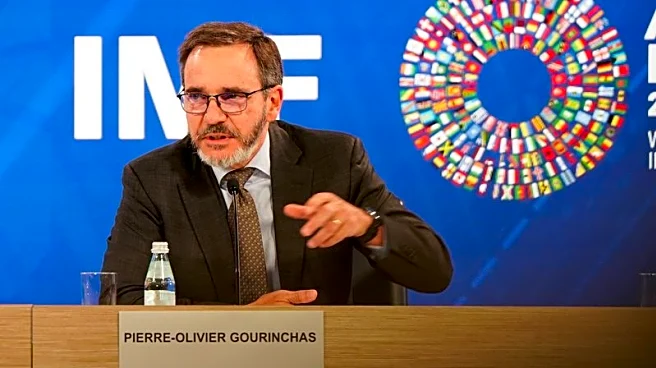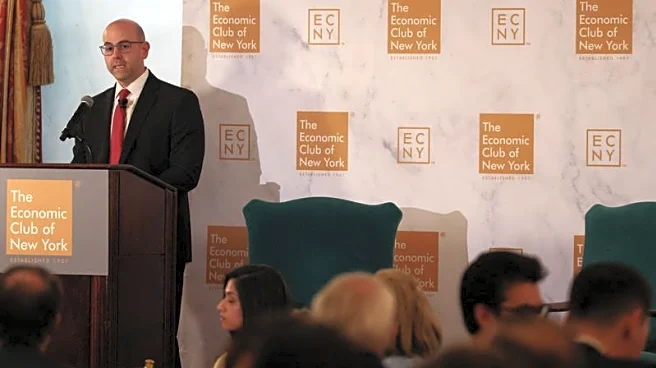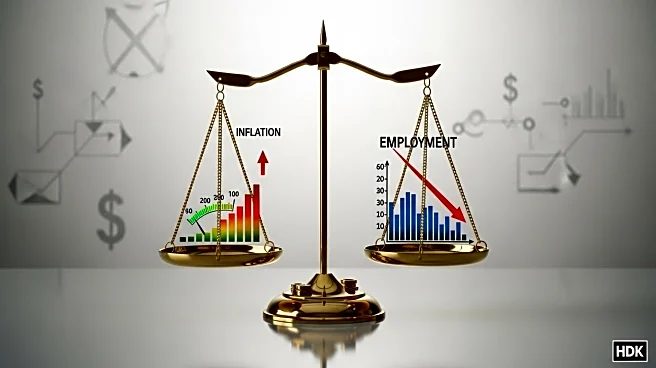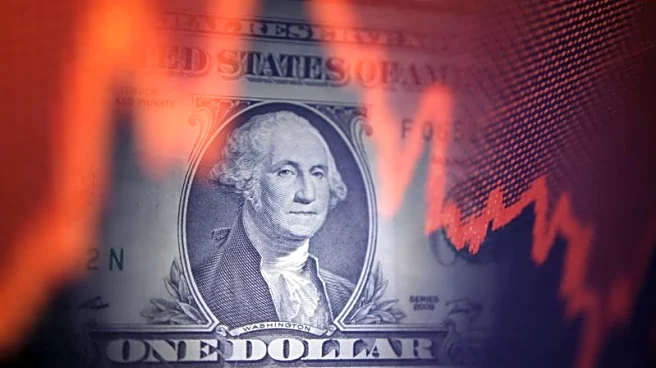What's Happening?
The Federal Reserve is expected to cut interest rates by 25 basis points at its upcoming meeting on October 28-29, which would lower the overnight fed funds rate to a range of 3.75% to 4.00%. This decision comes amidst mixed economic signals, including
signs of economic weakness and concerns about the job market. Fed Governor Stephen Miran advocates for a more aggressive half-point cut, while Governor Christopher Waller supports a quarter-point reduction. The Federal Open Market Committee (FOMC) is divided on the number of interest rate cuts needed, as revealed in the minutes from the Fed's September meeting. The ongoing U.S. government shutdown, now in its third week, has resulted in a blackout of official economic data, complicating the Fed's decision-making process.
Why It's Important?
The potential rate cut by the Federal Reserve is significant as it reflects the central bank's response to emerging economic challenges, including a weakening labor market and geopolitical tensions. A reduction in interest rates could stimulate economic activity by making borrowing cheaper, potentially benefiting businesses and consumers. However, the division among Fed governors highlights the uncertainty surrounding the appropriate monetary policy response. The government shutdown further complicates the situation by delaying crucial economic data releases, which are essential for informed policy decisions. The outcome of the Fed's decision will have implications for financial markets, influencing investor sentiment and potentially affecting stock and bond prices.
What's Next?
The Federal Reserve's upcoming meeting on October 28-29 will be closely watched by investors and policymakers. The decision on interest rates will depend on the assessment of economic conditions and the impact of the government shutdown on data availability. Stakeholders, including businesses and financial institutions, will be monitoring the Fed's actions and statements for guidance on future monetary policy. The delay in economic data releases, such as the consumer price index report, adds uncertainty to the Fed's decision-making process. The speeches by Fed governors, including Christopher Waller and Stephen Miran, will be scrutinized for insights into the central bank's policy direction.
Beyond the Headlines
The ongoing debate among Federal Reserve governors over the appropriate rate cut highlights broader concerns about the U.S. economy's resilience in the face of geopolitical tensions and domestic challenges. The government shutdown's impact on data availability underscores the importance of reliable economic indicators for policy formulation. The Fed's decision will not only affect short-term economic conditions but also signal its long-term approach to managing economic stability. The division within the FOMC reflects differing views on balancing growth and inflation, which could influence future monetary policy strategies.














